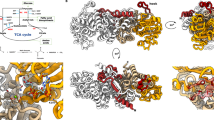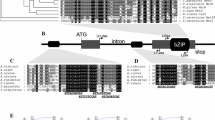Abstract
The MAL-activator genes of Saccharomyces cerevisiae encode regulatory proteins required for the expression of the structural genes encoding maltose permease and maltase. Residues within the C-terminal region of the Mal63 protein required for negative regulation were previously identified. Evidence suggested that the C-terminal domain is also involved in positive regulatory functions, such as inducer responsiveness and transactivation in the context of a full-length protein. Charged-cluster to alanine scanning mutagenesis of the regulatory domain of MAL63 and the constitutive MAL43-C were undertaken to identify distinct regions within Mal63p involved in positive functions and to define their roles in induction. Mutations that affect the ability to activate transcription in the inducible MAL63 but have no effect in the constitutive MAL43-C define regions that function in induction. Those that affect both the inducible and constitutive alleles define regions involved in activation more generally. Mutations in MAL63 fell into three classes, those that have little or no impact on activity, those that decrease activity, and those that enhance function. Mutations from these classes mapped to distinct regions of the protein, identifying a region of approximately 90 residues (residues 331–423) involved in maltose sensing and an approximately 50-residue region at the extreme C-terminus (residues 420–470) required for activation, such as the formation and/or maintenance of an active state. These studies support a model for MAL-activator function which involves complex protein–protein interactions and overlapping negative and positive regulatory regions.




Similar content being viewed by others
References
Ausubel FM, Brent R, Kingston RE, Moore DD, Seidman JG, Smith JA, Struhl K (2002) Current protocols in molecular biology. Wiley, New York
Bohen SP, Yamamoto KR (1993) Isolation of Hsp90 mutants by screening for decreased steroid receptor function. Proc Natl Acad Sci USA 90:11424–11428
Cheng Q, Michels CA (1991) MAL11 and MAL61 encode the inducible high-affinity maltose transporter of Saccharomyces cerevisiae. J Bacteriol 173:1817–1820
Danzi SE, Zhang B, Michels CD (2000) Alterations in the Saccharomyces MAL-activator cause constitutivity but can be suppressed by intragenic mutations. Curr Genet 294:233–240
Des Etages SA, Saxena D, Huang HL, Falvey DA, Barber D, Brandriss MC (2001) Conformational changes play a role in regulating the activity of the proline utilization pathway-specific regulator in Saccharomyces cerevisiae. Mol Microbiol 40:890–899
Dubin RA, Needleman RB, Gossett D, Michels CA (1985) Identification of the structural gene encoding maltase within the MAL6 locus of Saccharomyces cerevisiae. J Bacteriol 164:605–610
Dubin RA, Charron MJ, Haut SR, Needleman RB, Michels CA (1988) Constitutive expression of the maltose fermentative enzymes in Saccharomyces carlsbergensis is dependent upon the mutational activation of a non-essential homolog of MAL63. Mol Cell Biol 8:1027–1035
El Alami M, Feller A, Pierard A, Dubois E (2002) The proper folding of a long C-terminal segment of the yeast Lys14p regulator is required for activation of LYS genes in response to the metabolic effector. Mol Microbiol 43:1629–1639
Elledge SJ, Davis RW (1988) A family of versatile centromeric vectors designed for use in the sectoring-shuffle mutagenesis assay in Saccharomyces cerevisiae. Gene 70:303–312
Gibson AW, Wojciechowicz LA, Danzi SE, Zhang B, Kim JH, Hu Z, Michels CA (1997) Constitutive mutations of the Saccharomyces cerevisiae MAL-activator genes MAL23, MAL43, MAL63, and mal64. Genetics 146:1287–1298
Hach A, Hon T, Zhang L (1999) A new class of repression modules is critical for heme regulation of the yeast transcriptional activator Hap1. Mol Cell Biol 19:4324–4333
Higgins VJ, Braidwood M, Bissinger P, Dawes IW, Attfield PV (1999) Leu343Phe substitution in the Malz3 protein of Saccharomyces cerevisiae increases the constitutivity and glucose insensitivity of MAL gene expression. Curr Genet 35:491–498
Hu Z, Nehlin JO, Ronne H, Michels CA (1995) MIG1-dependent and MIG1-independent glucose regulation of MAL gene expression in Saccharomyces cerevisiae. Gurr Genet 28:258–266
Hu Z, Gibson AW, Kim JH, Wojciechowicz LA, Zhang B, Michels CA (1999) Functional domain analysis of the Saccharomyces MAL-activator. Curr Genet 36:1-12
Kelly R, Kwon-Chung KJ (1992) A zinc finger protein from Candida albicans is involved in sucrose utilization. J Bacteriol 174:222–232
Kim J, Michels CA (1988) The MAL63 gene of Saccharomyces encodes a cysteine-zinc finger protein. Curr Genet 14:319–323
Lee HC, Hon T, Zhang L (2002) The molecular chaperone Hsp90 mediates heme activation of the yeast transcriptional activator Hap1. J Biol Chem 277:7430–7437
Leuther K, Salmeron J, Johnston S (1993) Genetic evidence that an activation domain of GAL4 does not require acidity and may form a β sheet. Cell 72:575–585
Medintz I, Jiang H, Han EK, Cui W, Michels CA (1996) Characterization of the glucose-induced inactivation of maltose permease in Saccharomyces cerevisiae. J Bacteriol 178:2245–2254
Needleman RB (1991) Control of maltase synthesis in yeast. Mol Microbiol 5:2070–2084
Peng G, Hopper JE (2000) Evidence for Gal3p′s cytoplasmic location and Gal80p′s dual cytoplasmic–nuclear location implicates new mechanisms for controlling Gal4p activity in Saccharomyces cerevisiae. Mol Cell Biol 20:5140–5148
Pratt WB (1998) The Hsp90-based chaperone system: involvement in signal transduction from a variety of hormone and growth factor receptors. Proc Soc Exp Biol Med 217:420–434
Pratt WB, Toft DO (2003) Regulation of signaling protein function and trafficking by the hsp90/hsp70-based chaperone machinery. Proc Soc Exp Biol Med 228:111–133
Sikorsky RS, Heiter P (1989) A system of shuttle vectors and yeast host strains designed for efficient manipulation of DNA in Saccharomyces cerevisiae. Genetics 122:19–27
Sollitti P, Marmur J (1988) Primary structure of the regulatory gene from the MAL6 locus of Saccharomyces carlsbergensis. Mol Gen Genet 27: 509–516
Wang X, Bali M, Medintz I, Michels CA (2002) Intracellular maltose is sufficient to induce MAL gene expression in Saccharomyces cerevisiae. Eukaryot Cell 1:696–703
Wertman KF, Drubin DG, Botstein D (1992) Systematic mutational analysis of the yeast ACT1 gene. Genetics 132:337–350
Acknowledgements
This project was supported by a grant to C.A.M. from the National Institute of General Medical Sciences (GM28216). The work was carried out in partial fulfillment of the requirements for the PhD degree from the Graduate School of the City University of New York (S.E.D., M.B.).
Author information
Authors and Affiliations
Corresponding author
Additional information
Communicated by S. Hohmann
Rights and permissions
About this article
Cite this article
Danzi, S.E., Bali, M. & Michels, C.A. Clustered-charge to alanine scanning mutagenesis of the Mal63 MAL-activator C-terminal regulatory domain. Curr Genet 44, 173–183 (2003). https://doi.org/10.1007/s00294-003-0429-9
Received:
Revised:
Accepted:
Published:
Issue Date:
DOI: https://doi.org/10.1007/s00294-003-0429-9




